The buttonhole stitch, known for its versatility and durability, is an essential technique in the world of sewing.
Whether you’re a beginner or an experienced seamstress, learning buttonhole stitch – how to sew opens up a realm of possibilities for adding secure closures and decorative touches to your projects.
In this comprehensive guide, we’ll take you through the step-by-step process of creating flawless buttonhole stitches by hand.
From securing buttons on your clothing to crafting intricate embroidery designs, this stitch has a wide range of applications that you’ll soon master.
Discover the art of creating buttonholes that not only serve their functional purpose but also enhance the aesthetics of your garments and accessories.
Whether you’re a fashion enthusiast, a DIY enthusiast, or someone seeking to expand your sewing skills, this guide will equip you with the knowledge and confidence to sew buttonhole stitches like a pro.
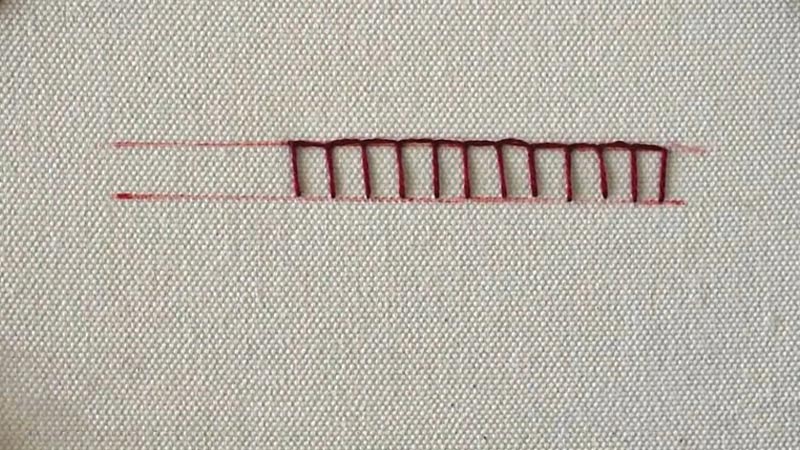
Buttonhole Stitch: How to Sew?
One common stitch used for embroidery, edging, and hemming, the buttonhole stitch is easy to learn. Here’s a step-by-step guide on how to sew a buttonhole stitch:
Materials You’ll Need
Fabric, needle, thread (matching the fabric or for decorative purposes), chalk or fabric marker, and scissors.
Mark the Buttonhole
Begin by marking the desired length and width of your buttonhole on the fabric using chalk or a fabric marker. The length should match the width of the button you plan to use.
Thread the Needle
Thread your needle with a single strand of thread. You can use a thread that matches your fabric for a discreet look or choose a contrasting color for a decorative effect.
Start at the Bottom
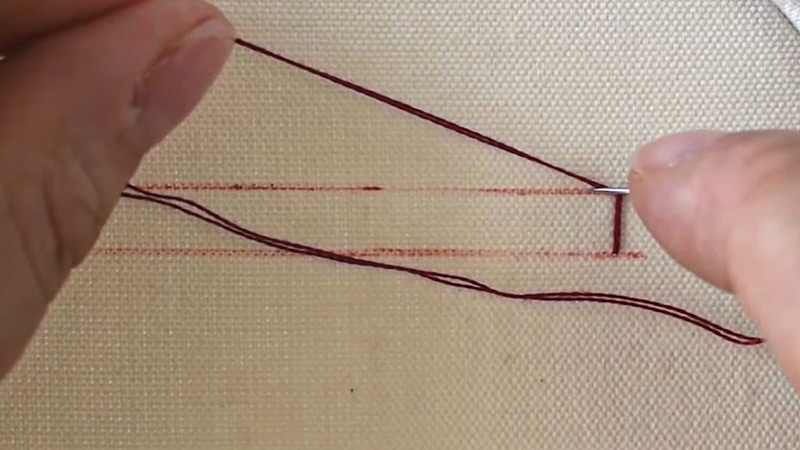
Insert the threaded needle from the backside of the fabric to the front, starting at the bottom of the buttonhole marking.
Create the First Stitch
Bring the needle up and make a straight stitch across the width of the buttonhole, starting from the bottom and ending at the top.
After that, bring the needle to the backside of the fabric, but before pulling the thread tight, pass the needle through the loop of thread that’s formed on the fabric’s surface.
Tighten the Loop
Pull the thread gently to tighten the loop around the straight stitch, securing it in place. This loop creates the characteristic “buttonhole” edge.
Repeat the Stitches
Continue making straight stitches across the buttonhole’s width, creating loops at the top of each stitch as you did in the previous step. Ensure that the loops are evenly spaced and snug but not too tight.
Finish the Buttonhole
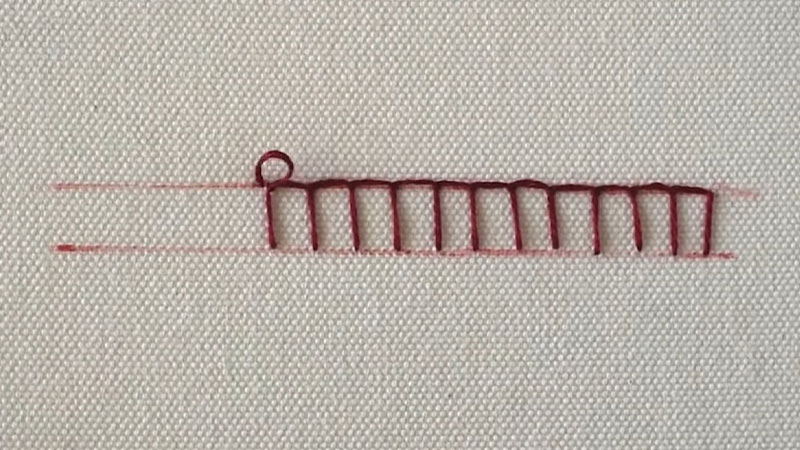
Once you reach the end of the buttonhole, secure the last loop by passing the needle to the backside of the fabric and tying a knot with the loose thread ends. Trim any excess thread.
Reinforce if Necessary
For added strength, you can repeat the buttonhole stitch over the same area or stitch around the buttonhole’s edges one more time.
Trim Excess Fabric
Carefully trim any excess fabric within the buttonhole, ensuring you don’t cut the buttonhole stitches.
Congratulations! You’ve successfully sewn a buttonhole stitch. This versatile stitch is not only functional but also adds a professional touch to your sewing projects.
Practice and experiment with different thread colors and buttonhole sizes to achieve the desired look for your garments, accessories, and crafts.
Types of Buttonhole Stitch
Buttonhole stitch is a versatile embroidery technique used to create a secure edge or decorative border on fabric. There are several variations of the buttonhole stitch, including:
Basic Buttonhole Stitch
This is the most common type, consisting of evenly spaced diagonal stitches that form a border or edge.
Closed Buttonhole Stitch
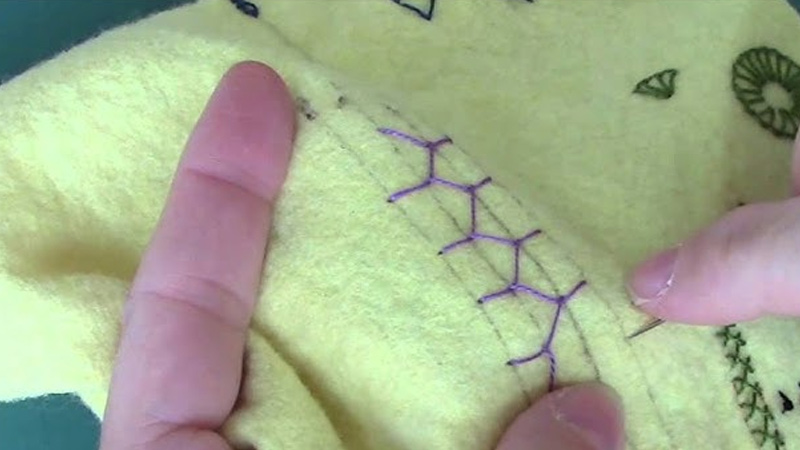
In this variation, the stitches are closely spaced, creating a solid, filled-in appearance. It’s often used for decorative purposes.
Open Buttonhole Stitch
The stitches in this variation are spaced farther apart, leaving gaps between them. This creates a lacy or openwork effect.
Whipped Buttonhole Stitch
This involves adding a second thread or yarn around the edge of the buttonhole stitch, giving it a raised and textured appearance.
Petal Buttonhole Stitch
This is a variation where the stitches are made in a petal-like arrangement, radiating outward from a central point. It’s often used for floral or leaf designs.
Detached Buttonhole Stitch
In this style, individual buttonhole stitches are made separately, not connected in a continuous line. It’s commonly used for creating detached leaves or petals in embroidery.
Picot Buttonhole Stitch
This version incorporates small picots or loops along the edge of the stitches, adding a decorative element.
These variations allow for creativity in embroidery and can be used in various combinations to achieve different textures and effects in your stitching projects.
What Are the Uses of Buttonhole Stitchs?
Buttonhole stitch is a versatile embroidery technique with a wide range of uses. Here are some common applications:
Buttonholes
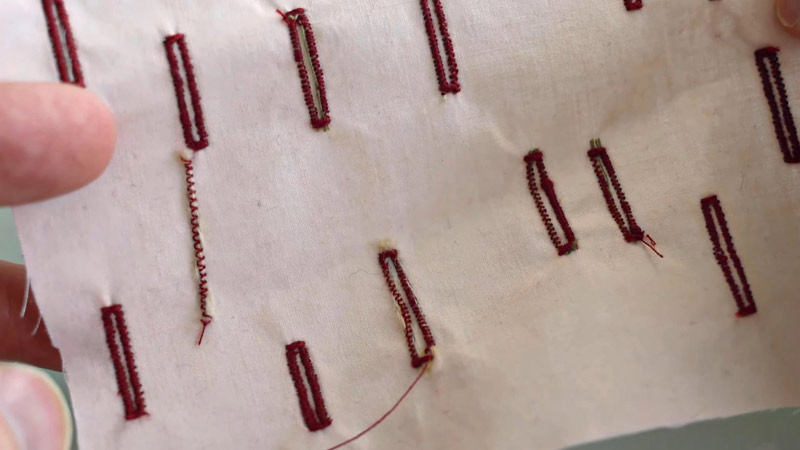
As the name suggests, a buttonhole stitch is frequently used to create secure and neat edges for buttonholes on clothing. It reinforces the opening and prevents fraying.
Edging and Hemming
It’s often used for edging and hemming fabric, providing a decorative and functional finish to garments, table linens, and other textiles.
Decorative Borders
Buttonhole stitch can be used to create decorative borders and trims on clothing, accessories, and home décor items like pillows or curtains.
Appliqué
When doing appliqué work, buttonhole stitch can be used to secure the raw edges of fabric shapes onto a base fabric, adding a decorative outline to the appliqué piece.
Embroidery
Buttonhole stitch is commonly used in surface embroidery to outline and fill shapes, create lettering, or add texture to designs.
Smocking
It’s used in smocking to create gathered and decorative areas on fabric, often seen in children’s clothing and traditional folk garments.
Drawn Thread Work
Buttonhole stitch can be used in drawn thread embroidery to create openwork patterns and delicate lace-like effects.
Monogramming and Couching
It’s employed to outline and fill in monogram letters for a distinctive and decorative touch. Buttonhole stitches can be used in couching techniques, where a thicker thread or yarn is laid on the fabric and then secured with buttonhole stitches.
Scalloped Edges
When you want to create scalloped edges on fabric, buttonhole stitch is a common choice to achieve this decorative effect.
Flower and Leaf Details
In floral and leaf embroidery designs, buttonhole stitch is used to create petal and leaf shapes, adding dimension and texture to the motifs.
Lace-making and Book Bonding
Buttonhole stitch is integral to various types of needle lace and bobbin lace techniques. It’s used in bookbinding to secure the edges of pages or create decorative borders on book covers.
These are just a few examples of the many applications of buttonhole stitch in embroidery and sewing. Its versatility makes it a valuable skill for both functional and decorative stitching projects.
Buttonhole Stitch vs. Blanket Stitch: The Name Debate
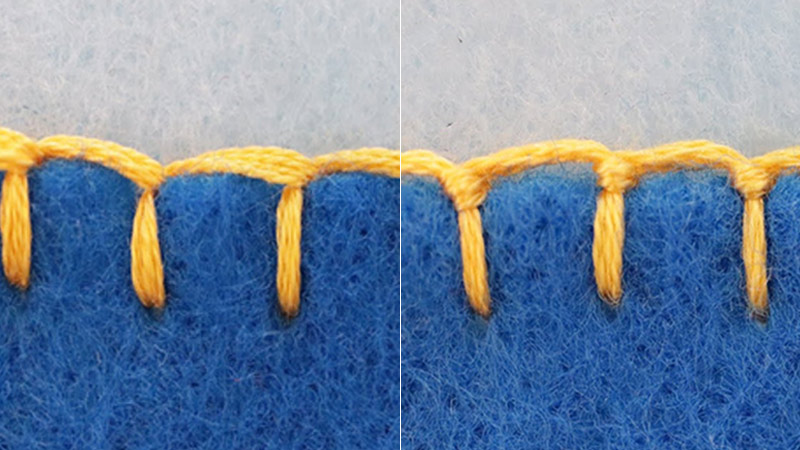
The terms “buttonhole stitch” and “blanket stitch” are sometimes used interchangeably, which can lead to confusion. However, there are distinctions between the two stitches:
Buttonhole Stitch
- Usage: Buttonhole stitch is primarily used for securing and finishing the edges of fabric, especially in the context of creating buttonholes and reinforcing them.
- Structure: It consists of closely spaced diagonal stitches that form a continuous, solid line along the fabric’s edge. The stitches are typically slanted at an angle.
- Function: Buttonhole stitch serves a functional purpose by preventing fraying and providing durability to openings like buttonholes.
Blanket Stitch
- Usage: Blanket stitch is a versatile embroidery stitch used for various decorative and functional purposes, including edging blankets, creating decorative borders, and attaching appliqué pieces.
- Structure: It involves a series of equally spaced, vertical stitches that extend outward from the fabric’s edge. These stitches can be straight or slightly slanted.
- Function: While it can serve a functional role in securing edges, blanket stitch is often chosen for its decorative qualities and can be used in a broader range of embroidery and crafting applications.
In some regions or contexts, people may refer to both stitches as “buttonhole stitch” or “blanket stitch” interchangeably. The choice of terminology can vary depending on local traditions, personal preference, or specific crafting traditions.
To avoid confusion, it’s helpful to clarify the intended purpose and appearance of the stitch when discussing it with others, especially in instructional or pattern-sharing contexts.
FAQs
What is the purpose of a buttonhole stitch?
Buttonhole stitch is primarily used to secure and finish the edges of fabric, particularly in the creation of buttonholes on clothing and textiles. It prevents fraying and adds durability to openings where buttons will be attached.
Can I use a buttonhole stitch for decorative embroidery?
Yes, buttonhole stitch is versatile and commonly used for decorative embroidery. It can outline shapes, create textured borders, and add dimension to various embroidery designs.
How do I create a buttonhole stitch?
To make a buttonhole stitch, bring the needle up through the fabric, then insert it close to the starting point, pulling the thread through to form a loop. Pass the needle through the loop and tighten to create a secure stitch. Repeat this process along the edge.
What’s the difference between a buttonhole stitch and a blanket stitch?
Buttonhole stitch is primarily used for finishing edges and buttonholes, featuring closely spaced diagonal stitches. Blanket stitch, on the other hand, is a versatile embroidery stitch with vertical stitches used for decorative borders and edging.
Can I use buttonhole stitch for more than just buttonholes?
Yes, buttonhole stitch has various applications beyond buttonholes. It’s commonly used in embroidery for decorative borders, appliqué work, monogramming, and even creating lace-like effects in drawn thread embroidery.
Conclusion
Mastering the buttonhole stitch is a valuable skill that every sewing enthusiast should have in their repertoire. It empowers you to create secure closures on garments, accessories, and home decor items.
Throughout this guide, we’ve explored the step-by-step process of sewing buttonhole stitches by hand.
From the basics to advanced techniques, you’ve gained the knowledge needed to craft buttonholes that are not only functional but also aesthetically pleasing.
As you continue to practice and refine your buttonhole stitching skills, you’ll discover countless opportunities to incorporate this versatile technique into your sewing projects.
Whether you’re designing clothing, crafting heirloom-quality pieces, or simply mending a beloved item, the buttonhole stitch will be your trusted companion.
With dedication and creativity, you’ll soon find yourself confidently sewing buttonhole stitches that elevate the quality and beauty of your handmade creations. Embrace this skill, and let your sewing journey flourish!
Leave a Reply